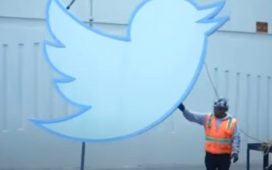The pressure to build engaged communities across multiple social media platforms has skyrocketed, but many companies haven’t empowered their social media managers with the resources they need to succeed.
Here’s what life looks like for today’s typical social media manager:
- Create engaging graphic and video content for 3 to 8 social media platforms, optimized for each platform’s unique post types and audiences
- Consistently respond to comments, mentions, and DMs on each platform
- Monitor trends and competitors, while keeping up with frequent algorithm changes and feature updates
- Measure success and reporting to demonstrate their strategy is meeting lofty growth goals on each platform
- And often much more, depending on the role
Most importantly, they’re often expected to do this as a team of one.
So, how is a social media pro supposed to keep up?
In addition to general sorcery, they need organization, productivity, and scheduling tools to automate their day-to-day as much as possible.
Here are five ways social media managers can benefit from automation:
1. Manage multiple accounts in one place
It all starts with a great social media management platform. All-in-one tools like Loomly, Sendible, and Planoly make it easy to craft, optimize, schedule, and automatically post content across all your social media channels.
In addition to core social media calendar functionality, these platforms also serve as a centralized hub for real-time social media interactions management and asset libraries, as well as reporting and analytics.
With the right social media management platform in place, social media managers can realistically scale their efforts across each account.
2. Maintain a consistent, optimized post schedule
Since post consistency is one of the most important aspects of building a brand online, social media calendars that schedule and automatically post content are table stakes for any digital marketing tech stack.
The ability to unplug for a weekend or vacation is extremely important to the mental health of social media professionals. A visual calendar makes it easy to plan posts for weeks or months in advance. Auto-posting also ensures content will be posted at optimal times for engagement.
With a great calendar and scheduling platform, a social media manager can reallocate the hours they would have spent from manually posting on each platform to ongoing tasks that are essential to improving results (i.e., research, competitor analysis, trend monitoring, and brainstorming).
Social media is supposed to be SOCIAL! If a social media manager is spending all their time posting manually, they won’t be able to engage with their followers and develop relationships with industry peers that will build brand awareness over time.
3. Create better content, faster
Generative AI tools like ChatGPT have dominated headlines recently. They certainly provide an opportunity to help produce basic content like simple captions, but AI still can’t match the human touch required to make a joke or hop on a trend. ChatGPT can build the framework and generate ideas, but it is still the responsibility of the social media manager to make content relatable and authentic – otherwise, it won’t perform well.
While we shouldn’t rely on AI alone to create content, there are dozens of incredible tools like Canva and CapCut that can help social media managers create scroll-stopping graphic, video, and audio content in a fraction of the time.
4. Streamline collaboration and approval
One of the biggest bottlenecks in social media marketing is the collaboration and approval process. Facilitating a review workflow between designers, leadership, legal, and/or clients via email or Slack alone can lead to frequent delays and mistakes in a space where timing and attention to detail are everything.
Project management tools like Monday are an affordable option to keep asset versions and team/client communication all in one place. Or, better yet, your social media management platform will offer custom workflows and user permissions, while integrating with Slack and Microsoft Teams to truly provide an all-in-one solution.
5. Aggregate reporting & analytics
Measuring success is essential to fine-tuning a content strategy and to the continuous improvement of any social media manager. However, logging into 5 social media accounts to manually collect data can waste hours per week.
Each social platform has its own reporting and analytics suite, but a great social media management tool aggregates data such as reach, clicks, views, engagement and more in one visual dashboard. Better yet, it allows social media managers to automatically send monthly or weekly reports to leadership or their clients.
To wrap up: social media managers need help!
There is a growing gap between what is expected of today’s social media manager and company-provided resources. The companies that make it a priority to empower their social media managers with the best tools will be significantly more likely to achieve their goals and establish a leading brand online.








